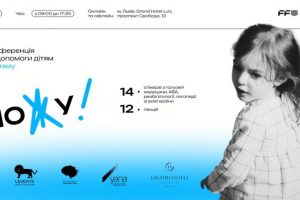Тяжелая кожная побочная реакция (SCAR) опасна для жизни. В последние годы новые исследования дали лучшее понимание патогенеза этих заболеваний. Эти болезни имеют уникальные проявления и различные патомеханизмы. Поэтому теоретически варианты лечения могут быть разными для разных SCAR. Однако из-за редкости этих заболеваний достаточных доказательств по-прежнему не хватает, чтобы поддержать лучший выбор лечения для пациентов с SCAR. Здесь представлен краткий обзор с акцентом на характеристики и методы лечения SCAR. Он может служить руководством, основанным на наилучших знаниях, и может пролить свет на направления дальнейших исследований.
Гиперчувствительность к препаратам может привести к нескольким различным видам реакций. В большинстве случаев гиперчувствительность к лекарственным средствам представляет собой генерализованную пятнисто-папулезную экзантему, которая является слабой и практически исчезает после удаления причинного агента. Однако в небольшой части случаев гиперчувствительность к лекарственным средствам проявлялась как серьезная лекарственная реакция. Эти тяжелые реакции опасны для жизни и называются тяжелыми кожными побочными реакциями (SCAR).
SCAR состоят из некоторых различных заболеваний, включая:
- синдром Стивенса-Джонсона / токсический эпидермальный некролиз (SJS / TEN),
- лекарственная реакция с эозинофилией и системные симптомы (DRESS),
- острый генерализованный экзантематозный пустулез (AGEP)
- генерализованная буллезная фиксированная лекарственнная сыпь (GBFDE ) [1].
Все они имеют значительные показатели заболеваемости и смертности. Однако каждый SCAR имеет свои характерные кожные проявления, причинный лекарственный препарат, клиническое течение, патомеханизмы и возможные методы лечения. Поэтому знакомство с SCAR и обеспечение оперативного лечения важно для управления этими заболеваниями и снижения неблагоприятных последствий.
Редкость SCAR не может ослабить важность управления этими заболеваниями. Все эти болезни, в том числе SJS / TEN, DRESS, AGEP и GBFDE, содержат значительные показатели заболеваемости и смертности, которые нельзя игнорировать. Однако, действительно, низкая частота SCAR ограничивает выполнение широкомасштабных рандомизированных исследований, что, в свою очередь, приводит к отсутствию достаточных клинических доказательств в лечении этих заболеваний. За исключением наличия некоторых мета-анализов при лечении пациентов с SJS / TEN, для пациентов с другими SCARs существует большой разрыв между клинической практикой и управлением, основанным на фактических данных. Необходимы дальнейшие усилия по этим вопросам для улучшения знаний о контроле SCAR.
Таблица 1. Лечение тяжелых кожных побочных реакций (SCARs)
| SCARs | Комментарии |
| SJS/TEN Поддерживающая терапия | Это самое важное и фундаментальное лечение и должно включать оценку и лечение кожных ран, состояния жидкости и питания, электролитного баланса, функции почек и дыхательных путей и адекватного контроля боли. |
| Системные кортикостероиды | Они чаще всего используются в SJS / TEN, кроме поддерживающей терапии. Существуют разногласия относительно использования кортикостероидов. Существует тенденция к выживанию системных кортикостероидов по сравнению с поддерживающей терапией (отношение шансов: 0,54, 95% ДИ: 0,29-1,01). |
| Внутривенный иммуноглобулин (IVIG) | Результаты были противоречивыми. Недавно опубликованный метаанализ не показал различий в смертности при сравнении пациентов, получавших IVIG, с теми, кто получал поддержку. |
| Циклоспорин | Три недавних исследования мета-анализа показали значительное и благоприятное действие циклоспорина по сравнению с поддерживающей терапией по смертности. |
| Анти-ФНО-α | Существует неожиданное увеличение смертности у пациентов, получающих талидомид. В нескольких отчетах о случаях заболевания и в одной серии случаев были отмечены положительные результаты инфликсимаба или этанерцепта в лечении SJS / TEN. |
| Плазмаферез | Плазмаферез может удалять токсичные и вредные медиаторы из пациентов и, как было показано, обеспечивает быстрое и значительное улучшение в некоторых отчетах. |
| DRESS Поддерживающая терапия | Может иметь более высокий уровень обнаруживаемых аутоантител и более высокий уровень аутоиммунных долгосрочных осложнений. Необходимы дальнейшие исследования. |
| Системные кортикостероиды | Это основное средство. Они могут уменьшить возникновение вспышек болезни и уменьшить вероятность развития аутоиммунных осложнений. Необходимы индивидуальные корректировки. |
| IVIG | Результаты конфликтуют. Его нельзя использовать в качестве монотерапии.
|
| Другие | Они включают циклоспорин, циклофосфамид, миофенолат мофетил и ритуксимаб. В дополнение к системным кортикостероидам или IVIG были предложены противовирусные терапии, такие как ганцикловир, у пациентов с тяжелым заболеванием и вирусной реактивацией |
| AGEP Поддерживающая терапия. | Она включает идентификацию и удаление возможных причинных препаратов. |
| Топические кортикостероиды | Они коррелировали со сниженной средней продолжительностью госпитализации. |
| Системные кортикостероиды | Благотворный эффект от использования системных кортикостероидов нуждается в дальнейших исследованиях. |
| GBFDE Поддерживающая терапия |
Она включает оперативную идентификацию и удаление возможных причинных препаратов. |
| Системные кортикостероиды | Недостаточно доказательств. |
Источник: Treatments for Severe Cutaneous Adverse Reactions, Yung-Tsu Cho and Chia-Yu Chu
J Immunol Res. 2017; 2017: 1503709. Published online 2017 Dec 27. doi: 10.1155/2017/1503709
References
- Paulmann M., Mockenhaupt M. Severe drug-induced skin reactions: clinical features, diagnosis, etiology, and therapy. Journal der Deutschen Dermatologischen Gesellschaft. 2015;13(7):625–643. doi: 10.1111/ddg.12747. [PubMed] [Cross Ref]
- Rzany B., Mockenhaupt M., Baur S., et al. Epidemiology of erythema exsudativum multiforme majus, Stevens-Johnson syndrome, and toxic epidermal necrolysis in Germany (1990–1992): structure and results of a population-based registry. Journal of Clinical Epidemiology. 1996;49(7):769–773. doi: 10.1016/0895-4356(96)00035-2. [PubMed] [Cross Ref]
- Mockenhaupt M., Viboud C., Dunant A., et al. Stevens-Johnson syndrome and toxic epidermal necrolysis: assessment of medication risks with emphasis on recently marketed drugs. The EuroSCAR-study. Journal of Investigative Dermatology. 2008;128(1):35–44. doi: 10.1038/sj.jid.5701033. [PubMed] [Cross Ref]
- Firoz B. F., Henning J. S., Zarzabal L. A., Pollock B. H. Toxic epidermal necrolysis: five years of treatment experience from a burn unit. Journal of the American Academy of Dermatology. 2012;67(4):630–635. doi: 10.1016/j.jaad.2011.12.014. [PubMed] [Cross Ref]
- Bastuji-Garin S., Rzany B., Stern R. S., Shear N. H., Naldi L., Roujeau J. C. Clinical classification of cases of toxic epidermal necrolysis, Stevens-Johnson syndrome, and erythema multiforme. Archives of Dermatology. 1993;129(1):92–96. doi: 10.1001/archderm.1993.01680220104023. [PubMed] [Cross Ref]
- Shwartz R. A., McDonough P. H., Lee B. W. Toxic epidermal necrolysis. Part I. Introduction, history, classification, clinical features, systemic manifestations, etiology, and immunopathogenesis. Journal of the American Academy of Dermatology. 2013;69(2):173.e1–173.e13. doi: 10.1016/j.jaad.2013.05.003. [PubMed] [Cross Ref]
- Harr T., French L. E. Toxic epidermal necrolysis and Stevens-Johnson syndrome. Orphanet Journal of Rare Diseases. 2010;5(1):p. 39. doi: 10.1186/1750-1172-5-39. [PMC free article] [PubMed] [Cross Ref]
- Bastuji-Garin S., Fouchard N., Bertocchi M., Roujeau J. C., Revuz J., Wolkenstein P. SCORTEN: a severity-of-illness score for toxic epidermal necrolysis. Journal of Investigative Dermatology. 2000;115(2):149–153. doi: 10.1046/j.1523-1747.2000.00061.x. [PubMed] [Cross Ref]
- Rzany B., Hering O., Mochenhaupt M., et al. Histopathological and epidemiological characteristics of patients with erythema exudativum multiforme major, Stevens—Johnson syndrome and toxic epidermal necrolysis. British Journal of Dermatology. 1996;135(1):6–11. doi: 10.1111/j.1365-2133.1996.tb03598.x. [PubMed] [Cross Ref]
- Paquet P., Nikkels A., Arrese J. E., Vanderkelen A., Pierard G. E. Macrophages and tumor necrosis factor a in toxic epidermal necrolysis. Archives of Dermatology. 1994;130(5):605–608. doi: 10.1001/archderm.1994.01690050073012. [PubMed] [Cross Ref]
- Nassif A., Moslehi H., Le Gouvello S., et al. Evaluation of the potential role of cytokines in toxic epidermal necrolysis. Journal of Investigative Dermatology. 2004;123(5):850–855. doi: 10.1111/j.0022-202X.2004.23439.x. [PubMed] [Cross Ref]
- Viard I., Wehril P., Bullani R., et al. Inhibition of toxic epidermal necrolysis by blockade of CD95 with human intravenous immunoglobulin. Science. 1998;282(5388):490–493. doi: 10.1126/science.282.5388.490. [PubMed] [Cross Ref]
- Abe R., Shimizu T., Shibaki A., Nakamura H., Watanabe H., Shimizu H. Toxic epidermal necrolysis and Stevens-Johnson syndrome are induced by soluble Fas ligand. American Journal of Pathology. 2003;162(5):1515–1520. doi: 10.1016/S0002-9440(10)64284-8. [PMC free article] [PubMed] [Cross Ref]
- Murata J., Abe R., Shimizu H. Increased soluble Fas ligand levels in patients with Stevens-Johnson syndrome and toxic epidermal necrolysis preceding skin detachment. Journal of Allergy and Clinical Immunology. 2008;122(5):992–1000. doi: 10.1016/j.jaci.2008.06.013. [PubMed] [Cross Ref]
- Nassif A., Bensussan A., Boumsell L., et al. Toxic epidermal necrolysis: effector cells are drug-specific cytotoxic T cells. Journal of Allergy and Clinical Immunology. 2004;114(5):1209–1215. doi: 10.1016/j.jaci.2004.07.047. [PubMed] [Cross Ref]
- Nassif A., Bensussan A., Dorothee G., et al. Drug specific cytotoxic T-cells in the skin lesions of a patient with toxic epidermal necrolysis. Journal of Investigative Dermatology. 2002;118(4):728–733. doi: 10.1046/j.1523-1747.2002.01622.x. [PubMed] [Cross Ref]
- Posadas S. J., Padial A., Torres M. J., et al. Delayed reactions to drugs show levels of perforin, granzyme B, and Fas-L to be related to disease severity. Journal of Allergy and Clinical Immunology. 2002;109(1):155–161. doi: 10.1067/mai.2002.120563. [PubMed] [Cross Ref]
- Chung W. H., Hung S. I., Yang J. Y., et al. Granulysin is a key mediator for disseminated keratinocyte death in Stevens-Johnson syndrome and toxic epidermal necrolysis. Nature Medicine. 2008;14(12):1343–1350. doi: 10.1038/nm.1884. [PubMed] [Cross Ref]
- Fujita Y., Yoshioka N., Abe R., et al. Rapid immunochromatographic test for serum granulysin is useful for the prediction of Stevens-Johnson syndrome and toxic epidermal necrolysis. Journal of the American Academy of Dermatology. 2011;65(1):65–68. doi: 10.1016/j.jaad.2010.04.042. [PubMed] [Cross Ref]
- Haber J., Hopman W., Gomez M., Cartotto R. Late outcomes in adult survivors of toxic epidermal necrolysis after treatment in a burn center. Journal of Burn Care & Rehabilitation. 2005;26(1):33–41. doi: 10.1097/01.BCR.0000150215.78220.79. [PubMed] [Cross Ref]
- Magina S., Lisboa C., Leal V., Palmares J., Mesquita-Guimaraes J. Dermatological and ophthalmological sequels in toxic epidermal necrolysis. Dermatology. 2003;207(1):33–36. doi: 10.1159/000070938. [PubMed] [Cross Ref]
- Yang C. W., Cho Y. T., Chen K. L., Chen Y. C., Song H. L., Chu C. Y. Long-term sequelae of Stevens-Johnson syndrome/toxic epidermal necrolysis. Acta Dermato Venereologica. 2016;96(4):525–529. doi: 10.2340/00015555-2295. [PubMed] [Cross Ref]
- Endorf F. W., Cancio L. C., Gibran N. S. Toxic epidermal necrolysis clinical guidelines. Journal of Burn Care & Research. 2008;29(5):706–712. doi: 10.1097/BCR.0b013e3181848bb1. [PubMed] [Cross Ref]
- Sassolas B., Haddad C., Mochenhaupt M., et al. ALDEN, an algorithm for assessment of drug causality in Stevens–Johnson syndrome and toxic epidermal necrolysis: comparison with case–control analysis. Clinical Pharmacology & Therapeutics. 2010;88(1):60–68. doi: 10.1038/clpt.2009.252. [PubMed] [Cross Ref]
- Schneider J. A., Cohen P. R. Stevens-Johnson syndrome and toxic epidermal necrolysis: a concise review with a comprehensive summary of therapeutic interventions emphasizing supportive measures. Advances in Therapy. 2017;34(6):1235–1244. doi: 10.1007/s12325-017-0530-y. [PMC free article] [PubMed] [Cross Ref]
- Valeyrie-Allanore L., Ingen-Housz-Oro S., Chosidow O., Wolkenstein P. French referral center management of Stevens–Johnson syndrome/toxic epidermal necrolysis. Dermatologica Sinica. 2013;31(4):191–195. doi: 10.1016/j.dsi.2013.09.008. [Cross Ref]
- Creamer D., Walsh S. A., Dziewulski P., et al. U.K. guidelines for the management of Stevens–Johnson syndrome/toxic epidermal necrolysis in adults 2016. British Journal of Dermatology. 2016;174(6):1194–1227. doi: 10.1111/bjd.14530. [PubMed] [Cross Ref]
- Mochenhaupt M. Stevens-Johnson syndrome and toxic epidermal necrolysis: clinical patterns, diagnostic considerations, etiology, and therapeutic management. Seminars in Cutaneous Medicine and Surgery. 2014;33(1):10–16. doi: 10.12788/j.sder.0058. [PubMed] [Cross Ref]
- Lee H. G., Saeed H., Mantagos I. S., Mitchell C. M., Goverman J., Chodosh J. Burn unit care of Stevens Johnson syndrome/toxic epidermal necrolysis: a survey. Burns. 2016;42(4):830–835. doi: 10.1016/j.burns.2015.12.001. [PubMed] [Cross Ref]
- Schneck J., Fagot J. P., Sekula P., Sassolas B., Roujeau J. C., Mochenhaupt M. Effects of treatments on the mortality of Stevens-Johnson syndrome and toxic epidermal necrolysis: a retrospective study on patients included in the prospective EuroSCAR study. Journal of the American Academy of Dermatology. 2008;58(1):33–40. doi: 10.1016/j.jaad.2007.08.039. [PubMed] [Cross Ref]
- Sekula P., Dunant A., Mochenhaupt M., et al. Comprehensive survival analysis of a cohort of patients with Stevens–Johnson syndrome and toxic epidermal necrolysis. Journal of Investigative Dermatology. 2013;133(5):1197–1204. doi: 10.1038/jid.2012.510. [PubMed] [Cross Ref]
- Kakourou T., Klontza D., Soteropoulou F., Kattamis C. Corticosteroid treatment of erythema multiforme major (Stevens-Johnson syndrome) in children. European Journal of Pediatrics. 1997;156(2):90–93. doi: 10.1007/s004310050561. [PubMed] [Cross Ref]
- Halebian P. H., Corder V. J., Madden M. R., Finklestein J. L., Shires G. T. Improved burn center survival of patients with toxic epidermal necrolysis managed without corticosteroids. Annals of Surgery. 1986;204(5):503–512. doi: 10.1097/00000658-198611000-00001. [PMC free article] [PubMed] [Cross Ref]
- Kelemen J. J., 3rd., Cioffi W. G., McManus W. F., Mason A. D., Jr., Pruitt B. A. Burn center care for patients with toxic epidermal necrolysis. Journal of the American College of Surgery. 1995;180(3):273–278. [PubMed]
- Kinoshita Y., Saeki H. A review of toxic epidermal necrolysis management in Japan. Allergology International. 2017;66(1):36–41. doi: 10.1016/j.alit.2016.06.001. [PubMed] [Cross Ref]
- Araki Y., Sotozono C., Inatomi T., et al. Successful treatment of Stevens-Johnson syndrome with steroid pulsed therapy at disease onset. American Journal of Ophthalmology. 2009;147(6):1004–1011.e1. doi: 10.1016/j.ajo.2008.12.040. [PubMed] [Cross Ref]
- Hirahara K., Kano Y., Sato Y., et al. Methylprednisolone pulse therapy for Stevens-Johnson syndrome/toxic epidermal necrolysis: clinical evaluation and analysis of biomarkers. Journal of the American Academy of Dermatology. 2013;69(3):496–498. doi: 10.1016/j.jaad.2013.04.007. [PubMed] [Cross Ref]
- Zimmermann S., Sekula P., Venhoff M., et al. Systemic immunomodulating therapies for Stevens-Johnson syndrome and toxic epidermal necrolysis. A systematic review and meta-analysis. JAMA Dermatology. 2017;153(6):514–522. doi: 10.1001/jamadermatol.2016.5668. [PubMed] [Cross Ref]
- Prins C., Kerdel F. A., Padilla R. S., et al. Treatment of toxic epidermal necrolysis with high-dose intravenous immunoglobulins: multicenter retrospective analysis of 48 consecutive cases. Archives of Dermatology. 2003;139(1):26–32. doi: 10.1001/archderm.139.1.26. [PubMed] [Cross Ref]
- Trent J. T., Kirsner R. S., Romanelli P., Kerdel F. A. Analysis of intravenous immunoglobulin for the treatment of toxic epidermal necrolysis using SCORTEN: the University of Miami experience. Archives of Dermatology. 2003;139(1):39–43. doi: 10.1001/archderm.139.1.39. [PubMed] [Cross Ref]
- Al-Mutairi N., Arun J., Osama N. E., et al. Prospective, noncomparative open study from Kuwait of the role of intravenous immunoglobulin in the treatment of toxic epidermal necrolysis. International Journal of Dermatology. 2004;43(11):847–851. doi: 10.1111/j.1365-4632.2004.02048.x. [PubMed] [Cross Ref]
- Stella M., Cassano P., Bollero D., Clemente A., Giorio G. Toxic epidermal necrolysis treated with intravenous high-dose immunoglobulins: our experience. Dermatology. 2001;203(1):45–49. doi: 10.1159/000051702. [PubMed] [Cross Ref]
- Brown K. M., Silver G. M., Halerz M., Walaszek P., Sandroni A., Gamelli R. L. Toxic epidermal necrolysis: does immunoglobulin make a difference? Journal of Burn Care & Rehabilitation. 2004;25(1):81–88. doi: 10.1097/01.BCR.0000105096.93526.27. [PubMed] [Cross Ref]
- Shortt R., Gomez M., Mittman N., Cartotto R. Intravenous immunoglobulin does not improve outcome in toxic epidermal necrolysis. Journal of Burn Care & Rehabilitation. 2004;25(3):246–255. doi: 10.1097/01.BCR.0000124746.33279.86. [PubMed] [Cross Ref]
- Bachot N., Revuz J., Roujeau J. C. Intravenous immunoglobulin treatment for Stevens-Johnson syndrome and toxic epidermal necrolysis: a prospective noncomparative study showing no benefit on mortality or progression. Archives of Dermatology. 2003;139(1):33–36. doi: 10.1001/archderm.139.1.33. [PubMed] [Cross Ref]
- Yang Y., Xu J., Li F., Zhu X. Combination therapy of intravenous immunoglobulin and corticosteroid in the treatment of toxic epidermal necrolysis and Stevens-Johnson syndrome: a retrospective comparative study in China. International Journal of Dermatology. 2009;48(10):1122–1128. doi: 10.1111/j.1365-4632.2009.04166.x. [PubMed] [Cross Ref]
- Shwartz R. A., McDonough P. H., Lee B. W. Toxic epidermal necrolysis. Part II. Prognosis, sequelae, diagnosis, differential diagnosis, prevention, and treatment. Journal of the American Academy of Dermatology. 2013;69(2):187. e1–187.e16. doi: 10.1016/j.jaad.2013.05.002. [PubMed] [Cross Ref]
- Huang Y. C., Li Y. C., Chen T. J. The efficacy of intravenous immunoglobulin for the treatment of toxic epidermal necrolysis: a systematic review and meta-analysis. British Journal of Dermatology. 2012;167(2):424–432. doi: 10.1111/j.1365-2133.2012.10965.x. [PubMed] [Cross Ref]
- Lee H. Y., Lim Y. L., Thirumoorthy T., Pang S. M. The role of intravenous immunoglobulin in toxic epidermal necrolysis: a retrospective analysis of 64 patients managed in a specialized centre. British Journal of Dermatology. 2013;169(6):1304–1309. doi: 10.1111/bjd.12607. [PubMed] [Cross Ref]
- Valeyrie-Allanore L., Wolkenstein P., Brochard L., et al. Open trial of ciclosporin treatment for Stevens-Johnson syndrome and toxic epidermal necrolysis. British Journal of Dermatology. 2010;163(4):847–853. doi: 10.1111/j.1365-2133.2010.09863.x. [PubMed] [Cross Ref]
- Lee H. Y., Fook-Chong S., Koh H. Y., Thirumoorthy T., Pang S. M. Cyclosporine treatment for Stevens-Johnson syndrome/toxic epidermal necrolysis: retrospective analysis of a cohort treated in a specialized referral center. Journal of the American Academy of Dermatology. 2017;76(1):106–113. doi: 10.1016/j.jaad.2016.07.048. [PubMed] [Cross Ref]
- Chen Y. T., Hsu C. Y., Chien Y. N., Lee W. R., Huang Y. C. Efficacy of cyclosporine for the treatment of Stevens-Johnson syndrome and toxic epidermal necrolysis: systemic review and meta-analysis. Dermatologica Sinica. 2017;35(3):131–137. doi: 10.1016/j.dsi.2017.04.004. [Cross Ref]
- Gonzalez-Herrada C., Rodriguez-Martin S., Cachafeiro L., et al. Ciclosporin use in epidermal necrolysis is associated with an important mortality reduction: evidence from three different approaches. Journal of Investigative Dermatology. 2017;137(10):2092–2100. doi: 10.1016/j.jid.2017.05.022. [PubMed] [Cross Ref]
- Paquet P., Paquet F., Al Saleh W., Reper P., Vanderkelen A., Pierard G. E. Immunoregulatory effector cells in drug-induced toxic epidermal necrolysis. The American Journal of Dermatopathology. 2000;22(5):413–417. doi: 10.1097/00000372-200010000-00005. [PubMed] [Cross Ref]
- Wolkenstein P., Latarjet J., Roujeau J. C., et al. Randomised comparison of thalidomide versus placebo in toxic epidermal necrolysis. The Lancet. 1998;352(9140):1586–1589. doi: 10.1016/S0140-6736(98)02197-7. [PubMed] [Cross Ref]
- Fischer M., Fiedler E., Marsch W. C., Wohlrab J. Antitumour necrosis factor-α antibodies (infliximab) in the treatment of a patient with toxic epidermal necrolysis. British Journal of Dermatology. 2002;146(4):707–709. doi: 10.1046/j.1365-2133.2002.46833.x. [PubMed] [Cross Ref]
- Hunger R. E., Hunziker T., Buettiker U., Braathen L. R., Yawalkar N. Rapid resolution of toxic epidermal necrolysis with anti-TNF-α treatment. Journal of Allergy and Clinical Immunology. 2005;116(4):923–924. doi: 10.1016/j.jaci.2005.06.029. [PubMed] [Cross Ref]
- Wojtkiewicz A., Wysocki M., Fortuna J., Chrupek M., Matczuk M., Koltan A. Beneficial and rapid effect of infliximab on the course of toxic epidermal necrolysis. Acta Dermato-Venereologica. 2008;88(4):420–421. [PubMed]
- Famularo G., Didona B., Canzona F., Girardelli C. R., Cruciani G. Etanercept for toxic epidermal necrolysis. Annals of Pharmacotherapy. 2007;41(6):1083–1084. doi: 10.1345/aph.1K001. [PubMed] [Cross Ref]
- Gubinelli E., Canzona F., Tonanzi T., Raskovic D., Didona B. Toxic epidermal necrolysis successfully treated with etanercept. The Journal of Dermatology. 2009;36(3):150–153. doi: 10.1111/j.1346-8138.2009.00616.x. [PubMed] [Cross Ref]
- Paradisi A., Abeni D., Bergamo F., Ricci F., Didona D., Didona B. Etanercept therapy for toxic epidermal necrolysis. Journal of the American Academy of Dermatology. 2014;71(2):278–283. doi: 10.1016/j.jaad.2014.04.044. [PubMed] [Cross Ref]
- Yamada H., Takamori K. Status of plasmapheresis for the treatment of toxic epidermal necrolysis in Japan. Therapeutic Apheresis and Dialysis. 2008;12(5):355–359. doi: 10.1111/j.1744-9987.2008.00609.x. [PubMed] [Cross Ref]
- Lissia M., Figus A., Rubino C. Intravenous immunoglobulins and plasmapheresis combined treatment in patients with severe toxic epidermal necrolysis: preliminary report. British Journal of Plastic Surgery. 2005;58(4):504–510. doi: 10.1016/j.bjps.2004.12.007. [PubMed] [Cross Ref]
- Kamanabroo D., Schmitz-Landgraf W., Czarnetzki B. M. Plasmapheresis in severe drug-induced toxic epidermal necrolysis. Archives of Dermatology. 1985;121(12):1548–1549. doi: 10.1001/archderm.1985.01660120074023. [PubMed] [Cross Ref]
- Bamichas G., Natse T., Christidou F., et al. Plasma exchange in patients with toxic epidermal necrolysis. Therapeutic Apheresis and Dialysis. 2002;6(3):225–228. doi: 10.1046/j.1526-0968.2002.00409.x. [PubMed] [Cross Ref]
- Narira Y. M., Hirahara K., Mizukawa Y., Kano Y., Shiohara T. Efficacy of plasmapheresis for the treatment of severe toxic epidermal necrolysis: is cytokine expression analysis useful in predicting its therapeutic efficacy? The Journal of Dermatology. 2011;38(3):236–245. doi: 10.1111/j.1346-8138.2010.01154.x. [PubMed] [Cross Ref]
- Cho Y. T., Yang C. W., Chu C. Y. Drug reaction with eosinophilia and systemic symptoms (DRESS): an interplay among drugs, viruses, and immune system. International Journal of Molecular Sciences. 2017;18(6, article E1243) doi: 10.3390/ijms18061243. [PMC free article] [PubMed] [Cross Ref]
- Chen Y. C., Chiu H. C., Chu C. Y. Drug reaction with eosinophilia and systemic symptoms: a retrospective study of 60 cases. Archives of Dermatology. 2010;146(12):1373–1379. doi: 10.1001/archdermatol.2010.198. [PubMed] [Cross Ref]
- Karduan S. H., Sekula P., Valeyrie-Allanore L., et al. Drug reaction with eosinophilia and systemic symptoms (DRESS): an original multisystem adverse drug reaction. Results from the prospective RegiSCAR study. British Journal of Dermatology. 2013;169(5):1071–1080. doi: 10.1111/bjd.12501. [PubMed] [Cross Ref]
- Tohyama M., Hashimoto K., Yasukawa M., et al. Association of human herpesvirus 6 reactivation with the flaring and severity of drug-induced hypersensitivity syndrome. British Journal of Dermatology. 2007;157(5):934–940. doi: 10.1111/j.1365-2133.2007.08167.x. [PubMed] [Cross Ref]
- Seishima M., Yamanaka S., Fujisawa T., Tohyama M., Hashimoto K. Reactivation of human herpesvirus (HHV) family members other than HHV-6 in drug-induced hypersensitivity syndrome. British Journal of Dermatology. 2006;155(2):344–349. doi: 10.1111/j.1365-2133.2006.07332.x. [PubMed] [Cross Ref]
- Kano Y., Tohyama M., Aihara M., et al. Sequelae of 145 patients with drug-induced hypersensitivity syndrome/drug reaction with eosinophilia and systemic symptoms: survey conducted by the Asian Research Committee on Severe Cutaneous Adverse Reaction (ASCAR) The Journal of Dermatology. 2015;42(3):276–282. doi: 10.1111/1346-8138.12770. [PubMed] [Cross Ref]
- Chen Y. C., Chang C. Y., Cho Y. T., Chiu H. C., Chu C. Y. Long-term sequelae of drug reaction with eosinophilia and systemic symptoms: a retrospective cohort study from Taiwan. Journal of the American Academy of Dermatology. 2013;68(3):459–465. doi: 10.1016/j.jaad.2012.08.009. [PubMed] [Cross Ref]
- Uhara H., Saiki M., Kawachi S., Ashida A., Oguchi S., Okuyama R. Clinical course of drug-induced hypersensitivity syndrome treated without systemic corticosteroids. Journal of the European Academy of Dermatology and Venereology. 2013;27(6):722–726. doi: 10.1111/j.1468-3083.2012.04547.x. [PubMed] [Cross Ref]
- Ushigome Y., Kano Y., Ishida T., Hirahara K., Shiohara T. Short- and long-term outcomes of 34 patients with drug-induced hypersensitivity syndrome in a single institution. Journal of the American Academy of Dermatology. 2013;68(5):721–728. doi: 10.1016/j.jaad.2012.10.017. [PubMed] [Cross Ref]
- Funck-Brentano E., Duong T. A., Bouvresse S., et al. Therapeutic management of DRESS: a retrospective study of 38 cases. Journal of the American Academy of Dermatology. 2015;72(2):246–252. doi: 10.1016/j.jaad.2014.10.032. [PubMed] [Cross Ref]
- Descamps V., Ben Said B., Sassolas B., et al. Management of drug reaction with eosinophilia and systemic symptoms (DRESS) Annales De Dermatologie Et De Venereologie. 2010;137(11):703–708. doi: 10.1016/j.annder.2010.04.024. [PubMed] [Cross Ref]
- Scheuerman O., Nofech-Moses Y., Rachmel A., Ashkenazi S. Successful treatment of antiepileptic drug hypersensitivity syndrome with intravenous immune globulin. Pediatrics. 2001;107(1, article e14) [PubMed]
- Fields K. S., Petersen M. J., Chiao E., Tristani-Firouzi P. Case reports: treatment of nevirapine-associated dress syndrome with intravenous immune globulin (IVIG) Journal of Drugs in Dermatology. 2005;4(4):510–513. [PubMed]
- Joly P., Janela B., Tetart F., et al. Poor benefit/risk balance of intravenous immunoglobulins in DRESS. Archives of Dermatology. 2012;148(4):543–544. doi: 10.1001/archderm.148.4.dlt120002-c. [PubMed] [Cross Ref]
- Mark G. K., Wong A., Dutz J. P. Cyclosporine treatment of drug-induced hypersensitivity syndrome. JAMA Dermatology. 2016;152(11):1254–1257. doi: 10.1001/jamadermatol.2016.2220. [PubMed] [Cross Ref]
- Laban E., Hainaut-Wierzbicka E., Pourreau F., Yacoub M., Sztermer E., Guillet G. Cyclophosphamide therapy for corticoresistant drug reaction with eosinophilia and systemic symptoms (DRESS) syndrome in a patient with severe kidney and eye involvement and Epstein-Barr virus reactivation. American Journal of Kidney Diseases. 2010;55(3):e11–e14. doi: 10.1053/j.ajkd.2009.10.054. [PubMed] [Cross Ref]
- Sidoroff A. Acute generalized exanthematous pustulosis. Chemical Immunology and Allergy. 2012;97:139–148. doi: 10.1159/000335625. [PubMed] [Cross Ref]
- Hotz C., Valeyrie-Allanore L., Haddad C., et al. Systemic involvement of acute generalized exanthematous pustulosis: a retrospective study of 58 patients. British Journal of Dermatology. 2013;169(6):1223–1232. doi: 10.1111/bjd.12502. [PubMed] [Cross Ref]
- Rouchouse B., Bonnefoy M., Pallot B., Jacquelin L., Dimoux-Dime G., Claudy A. L. Acute generalized exanthematous pustular dermatitis and viral infection. Dermatology. 1986;173(4):180–184. doi: 10.1159/000249246. [PubMed] [Cross Ref]
- Sidoroff A., Dunant A., Viboud C., et al. Risk factors for acute generalized exanthematous pustulosis (AGEP)—results of a multinational case-control study (EuroSCAR) British Journal of Dermatology. 2007;157(5):989–996. doi: 10.1111/j.1365-2133.2007.08156.x. [PubMed] [Cross Ref]
- Lee H. Y., Chou D., Pang S. M., Thirumoorthy T. Acute generalized exanthematous pustulosis: analysis of cases managed in a tertiary hospital in Singapore. International Journal of Dermatology. 2010;49(5):507–512. doi: 10.1111/j.1365-4632.2010.04313.x. [PubMed] [Cross Ref]
- Alniemi D. T., Wetter D. A., Bridges A. G., et al. Acute generalized exanthematous pustulosis: clinical characteristics, etiologic associations, treatments, and outcomes in a series of 28 patients at Mayo Clinic, 1996-2013. International Journal of Dermatology. 2017;56(4):405–414. doi: 10.1111/ijd.13434. [PubMed] [Cross Ref]
- Ingen-Housz-Oro S., Hotz C., Valeyrie-Allanore L., et al. Acute generalized exanthematous pustulosis: a retrospective audit of practice between 1994 and 2011 at a single centre. British Journal of Dermatology. 2015;172(5):1455–1457. doi: 10.1111/bjd.13540. [PubMed] [Cross Ref]
- Cho Y. T., Lin J. W., Chen Y. C., et al. Generalized bullous fixed drug eruption is distinct from Stevens-Johnson syndrome/toxic epidermal necrolysis by immunohistopathological features. Journal of the American Academy of Dermatology. 2014;70(3):539–548. doi: 10.1016/j.jaad.2013.11.015. [PubMed] [Cross Ref]
- Lipowicz S., Sekula P., Ingen-Housz-Oro S., et al. Prognosis of generalized bullous fixed drug eruption: comparison with Stevens-Johnson syndrome and toxic epidermal necrolysis. British Journal of Dermatology. 2013;168(4):726–732. doi: 10.1111/bjd.12133. [PubMed] [Cross Ref]













Комментировать